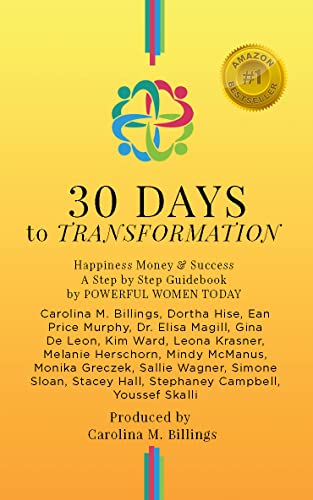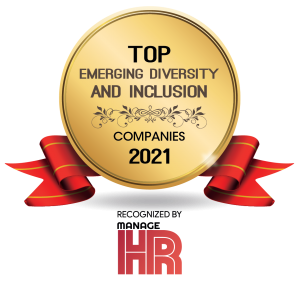How Do Successful Businesses Plan for Long-Term Success?

Discover the secrets to long-term business success through a series of expert insights and strategic approaches outlined in this article. Delve into the importance of adaptability, data-driven decision-making, and sustainability to build a company that stands the test of time. This piece offers a deep dive into proven methods and frameworks that have guided successful businesses towards enduring achievements.
- Prioritize 20% of Business Drivers
- Utilize Agile Frameworks and Prototyping
- Implement Triple Horizon Framework
- Set Flexible Goals with Data-Driven Decisions
- Focus on Adaptability and Sustainability
- Establish a Compelling North Star
- Use Three Horizons Method
- Foster Accountability and Alignment
- Integrate Competitive Intelligence and Market Analysis
- Conduct Quarterly Deep Dives
- Invest in Innovation and Continuous Improvement
- Understand Broader Organizational Challenges
- Adopt Flexible, Real-Time Strategy
- Develop Sustainable Strategies Through Consistent Execution
- Make Data-Driven Decisions
- Reduce Long-Term Goals to Short-Term Actions
Prioritize 20% of Business Drivers
Our strategic planning process is guided by the 80-20 rule. We prioritize time to assess the business, analyze industry and market trends, and evaluate both current and potential clients. This approach allows us to identify and concentrate on the 20% of business drivers that will generate 80% of our results for the year.
I begin thinking about the planning process around the six-month mark, using this period to jot down ideas, observations, and insights, while reviewing metrics and overall business health. By month eight, I dedicate focused time to formalize these thoughts into a comprehensive plan and begin positioning for implementation.
However, I view the plan as a living document rather than an absolute. As the market evolves, I remain attentive, flexible, and resilient, making necessary adjustments to ensure success upon implementation.
Simone Sloan, Executive Strategist, Your Choice Coach
Utilize Agile Frameworks and Prototyping
Our approach to strategic planning for long-term success is rooted in strategy and value differentiation. In today’s fast-paced business environment, this philosophy drives how we deliver solutions to clients—closing the gap between strategy and value through strategic confluence and shared ownership of success.
Key Elements of Our Approach:
- Agility in Execution: We use Agile frameworks and rapid prototyping to swiftly adapt to changing client needs. Our iterative project cycles allow us to test and refine solutions faster than traditional methods.
- Value-Driven Solutions: Every project aligns with measurable outcomes using tools like Value Gap Analysis and Strategy Canvas to identify high-impact areas that address critical challenges.
- Iterative Improvement: Continuous feedback loops refine strategies in real time, enabling quick adjustments based on evolving insights.
Our methodology empowers leaders and project teams by:
- Fostering Strategic Confluence: Aligning leadership, teams, and stakeholders around a unified vision to enhance collaboration.
- Promoting Shared Ownership: Encouraging accountability at all levels of the organization to drive collective success.
- Empowering Teams: Providing training and resources that enhance the skills of leaders and project teams.
A multinational technology firm faced delays in translating strategy into actionable results, impacting competitiveness. We implemented a strategic foresight framework using Horizon Scanning and Scenario Planning to identify emerging risks early. This reduced project lead time by 30%, improved stakeholder alignment, and enabled faster market entry—resulting in a 20% increase in ROI within six months.
Our ability to combine speed with sustainable value creation differentiates us:
- Quality with Speed: We deliver quickly without compromising quality through continuous feedback loops.
- Sustainable Value Creation: By integrating skills development into projects, we leave clients with enhanced capabilities.
- Long-Term Partnerships: We foster lasting relationships by providing ongoing support for sustained success beyond project completion.
Our approach ensures our clients achieve their goals while building resilience for long-term growth in a dynamic global landscape.
Fola F. Alabi, CIO – Strategy, Technology and PMO Delivery, Strategic Project Leader (SPL Global)
Implement Triple Horizon Framework
As a Strategy Director who’s guided numerous healthcare companies through market transformations, let me share our approach through the lens of a particularly insightful case from 2018 with a major insulin manufacturer.
We employ what I call the “Triple Horizon Framework”—simultaneously planning across immediate market dynamics, emerging opportunities, and disruptive innovations.
The company was facing a complex challenge: maintaining market share in traditional insulin products while preparing for the impending biosimilar wave and investing in next-generation diabetes care technologies. Instead of treating these as separate challenges, we implemented an integrated strategy based on three key pillars:
- Market Protection Through Innovation – We identified that while the core insulin market was mature, there was untapped potential in delivery mechanisms. We allocated 60% of R&D to enhancing our delivery systems, which led to the development of a smart insulin pen that captured 23% market share within 18 months of launch.
- Strategic Capability Building – Rather than just defending against biosimilar competition, we invested in building our own biosimilar capabilities. This seemingly counterintuitive move actually protected our market position by giving us first-mover advantage in the biosimilar space while maintaining our branded portfolio.
- Future-Focused Partnerships – We established what we called “Innovation Bridges”—strategic partnerships with diabetes management technology companies. This wasn’t just about product development; it was about creating an ecosystem around patient care.
The results were compelling:
- Market share remained stable at 34% despite new competitors.
- R&D efficiency improved by 28%.
- Five new patents were filed for delivery technologies.
- Strategic partnerships led to two successful joint ventures.
But here’s the key learning: successful strategic planning isn’t just about predicting the future—it’s about creating organizational capabilities that allow you to shape and adapt to whatever future emerges. In this case, this meant maintaining relevance not just as an insulin manufacturer, but as a comprehensive diabetes care solutions provider.
Looking back, this approach proved particularly prescient when the pandemic hit in 2020, as the company had already built the digital capabilities and partnership networks needed to adapt quickly to remote patient monitoring and support.
Krishna Yoganarasimha, Strategy Director, Hoomale
Set Flexible Goals with Data-Driven Decisions
Strategic planning is at the core of how we ensure long-term success. Our approach is built around flexible goal-setting paired with data-driven decision-making. This balance allows us to stay focused on our vision while adapting to a rapidly changing market.
The Approach:
- Define a Clear Vision: We start with a long-term vision—what we want Zapiy to stand for in the market. This serves as our guiding star and ensures every strategic decision aligns with our broader purpose.
- Break It Into Manageable Horizons: We segment our vision into shorter, actionable phases, typically in 3- to 5-year increments. Each phase has clear objectives that ladder up to the larger goal, creating a roadmap that feels both ambitious and achievable.
- Incorporate Continuous Feedback Loops: No plan is perfect, especially in the fast-evolving tech space. We review and refine our strategy quarterly, using KPIs and market data to guide adjustments.
When we were preparing to scale, our long-term vision was to become a leader in microlearning solutions for onboarding and training. To achieve this, we implemented a phased strategy:
- Phase 1: Establish Market Fit – We focused on smaller businesses, gathering feedback and fine-tuning our platform. This allowed us to perfect our product without the high pressure of enterprise-level expectations.
- Phase 2: Expand and Differentiate – Using data from Phase 1, we identified our strongest differentiators: ease of use and measurable training ROI. This guided our marketing and product roadmap as we targeted mid-market customers.
- Phase 3: Scale with Strategic Partnerships – We partnered with complementary SaaS companies, which accelerated our entry into enterprise markets. One such partnership directly contributed to a 40% increase in our customer base over 18 months.
By breaking down our vision into manageable steps and reviewing progress regularly, we avoided the pitfalls of rigid planning. This iterative approach kept us nimble and allowed us to capitalize on unexpected opportunities, like the surge in demand for remote learning tools during the pandemic
Strategic planning isn’t about predicting the future—it’s about preparing for it. Focus on clarity, adaptability, and consistent measurement. A flexible yet focused strategy ensures you’re always moving toward your goals, even when the path takes unexpected turns.
Focus on Adaptability and Sustainability
Strategic planning has been a cornerstone of our journey, allowing us to navigate the challenges of the fashion industry while staying true to our values.
Our approach to strategic planning centers on three pillars: adaptability, customer focus, and sustainability. We craft flexible, long-term roadmaps that align with our mission and allow room for innovation. For example, when we identified a growing demand for sustainable fashion, we implemented a five-year strategy to integrate eco-friendly materials and production methods into our operations.
This strategy guided several successful outcomes:
- Product Development: We launched a new line of customizable clothing made from organic fabrics, meeting customer expectations for both quality and sustainability.
- Operational Excellence: By reconfiguring our supply chain to prioritize renewable resources, we reduced our environmental footprint without compromising craftsmanship.
- Market Differentiation: This commitment has strengthened our brand identity, resonating with a clientele that values thoughtful, high-quality fashion.
By blending clear long-term objectives with agility to respond to market shifts, we’ve ensured our continued growth while championing innovation and sustainability.
Simon Elliott, Founder & Operations Director, CLIFTON
Establish a Compelling North Star
Dream big. Often many get their vision clouded by limiting beliefs based on where the company is today vs. where it could be on its best day in the future. Establishing a compelling North Star or BHAG for a company is a critical tool for recruitment and enacting strategy. How can one decide what to do tomorrow effectively if they are unsure of where they are going or intend to go? Without a cardinal heading/north star to follow it is insurmountable and often impossible to make good strategic decisions at the tactical level.
Our ten-year target established in 2020 was and still is to repurpose and reinvest $10M towards our front-line worker initiative. With this vision in place, it has made all follow-on staffing, strategy, and investment decisions clear for us to do the right thing. We know where we are going and what we must do to get there. We have seen the most fruit from this initiative when it comes to recruitment and retention.
Instead of fighting to attract talent or convince them to come work for us, we now have a standing invitation: “Come help us redistribute wealth to our team and those that need it.” This is canvassed all throughout our company and excites people to join the team in an attempt to do something impactful. It also makes all our team members feel they are part of something bigger that they would rather not leave.
Fences are what we do; people come to work for us because they are attracted to why we do what we do. Give yourself and your team something to be inspired to run after.
Kevin Hohe, CEO, Complete Fence
Use Three Horizons Method
I have learned that businesses can get lost in daily tasks without a clear plan. They forget their BIGGER GOALS. It is like planning a road trip—you need to know where you are going and the important stops.
We use something called “The Three Horizons Method.” We look at three timeframes: the next year, the next 2-3 years, and the next 4-5 years. The best part is? We include everyone; from the newest hire to the most experienced team member.
We start with quarterly planning sessions where we ask three simple questions: What is working well and we should keep doing? What is holding us back? What opportunities are we missing?
Let me share a real win: When COVID hit, our plan helped us move fast. While others struggled and lost, we already had a “Digital Transformation” plan for the next few years. We sped it up and moved our customer service team remote in just two weeks. Our customer satisfaction even went up during the pandemic; because we were ready.
Remember, strategy is not about predicting everything perfectly. It is about being ready for different situations while staying true to your mission.
Farrukh Muzaffar, CMO | Co-Founder | Business strategist, Sustainability Jobs List
Foster Accountability and Alignment
Our strategic planning approach is deeply rooted in fostering accountability and alignment. Sustainable success comes from clear deliverables, a shared mission, and a team-wide commitment to achieving measurable goals. The process involves a blend of forward-looking analysis and immediate, actionable steps, ensuring organizations dream big and build the frameworks to get there.
One of our core principles is helping leaders embrace transparency and focus. We believe success isn’t just about having a vision; it’s about having the courage to break it down into tangible, achievable actions. This principle is at the heart of our approach, enabling leaders to transform aspirations into operational realities.
An example of this in practice is our work with a mid-sized tech company facing rapid growth. They had ambitious expansion plans but lacked the internal systems and leadership alignment to sustain their momentum. Through our strategic planning process, we guided them in creating a robust accountability framework that linked individual roles to the company’s overarching goals. This included refining their leadership’s focus on their mission and ensuring each team member understood how their contributions directly furthered organizational success.
The results were remarkable. Within 18 months, the company doubled its revenue, improved employee engagement scores by 25%, and scaled its operations seamlessly to new markets. A senior executive shared that the clarity and accountability they gained from the process drove results and created a culture where everyone feels empowered and connected to their mission.
By anchoring our strategies in accountability and alignment, we help organizations navigate uncertainty, embrace bold decisions, and position themselves for long-term success. It’s not just about surviving market shifts; it’s about thriving through them. The organizations that succeed are those that plan with purpose and execute with precision.
Rhett Power, CEO and Co-founder, Accountability Inc.
Integrate Competitive Intelligence and Market Analysis
Effective strategic planning for long-term success hinges on several best practices. First, integrating competitive intelligence and market analysis is crucial to understand the industry landscape and anticipate changes. Continuously tracking competitor activities and market trends ensures that strategies remain relevant and proactive.
Second, employing a structured approach to strategic planning, such as the Playing to Win framework, enables organizations to define clear goals, identify unique capabilities, and determine the best strategic moves. This method involves asking key questions like, “Where to play?” and “How to win?” to create a focused and coherent strategy.
One example of successful implementation is within the consumer electronics sector, where detailed market and competitor analysis helped a company identify growth opportunities, leading to a new product line launch that increased market share and profitability. This showcases the power of informed strategic decisions guided by competitive intelligence and structured planning.
Layton Cox, Sr. Director of Business Services, Sedulo Group
Conduct Quarterly Deep Dives
Our approach revolves around what we call “quarterly deep dives” combined with a rolling three-year vision. Every quarter, we block out an entire day (I know it sounds like a lot, but trust me, it’s worth it) to assess where we are and where we’re heading.
About a year ago, during one of these deep dives, we noticed a significant shift in our client base—our clients were increasingly interested in podcast appearances rather than traditional PR, but we were still primarily focused on press releases and media outreach.
We made a bold decision to restructure our service offerings. Instead of the typical PR services, we created a dedicated podcast outreach program as our main offering. This meant completely revamping our delivery process, building relationships with podcast hosts, retraining our team on podcast pitching, and even changing how we priced our services.
The outcome? We built MRR and increased client retention seeing most of our PR engagements would be one-time projects, but with podcasting we work with clients who understand the importance of the long-term play of getting on podcasts to build their brand.
The key wasn’t just making the change—it was having a structured process that allowed us to spot the podcast trend and execute on it methodically. Our quarterly reviews helped us track the implementation and make quick adjustments to our podcast outreach strategy when needed.
Zachary Bernard, Founder, We Feature You PR
Invest in Innovation and Continuous Improvement
Innovation and continuous improvement are central to our strategic planning for long-term success. We believe that staying ahead of market trends and continually enhancing our services is crucial. For example, we’ve consistently invested in R&D to refine our brand protection technology. One specific instance was when we integrated AI and machine learning into our platform to better identify counterfeit goods. This innovation drastically improved our efficiency and accuracy, giving our clients an edge in protecting their intellectual property.
The feedback from customers has been overwhelmingly positive, and we’ve seen a measurable increase in client retention because of it. This commitment to innovation not only helps us stand out in a competitive market but also keeps our solutions relevant as the digital landscape evolves. By focusing on constant improvement, we’ve been able to build stronger relationships with our partners and clients, which has contributed significantly to our long-term success.
Daniel Shapiro, Senior Vice President, Strategic Partnerships & Brand Relationships, Red Points
Understand Broader Organizational Challenges
Our approach to strategic planning revolves around understanding the broader challenges that organizations face and creating solutions that address both immediate needs and long-term goals. We emphasize adaptability and alignment with evolving business landscapes, ensuring that the strategies we adopt are both practical and sustainable.
For instance, we worked with a growing organization that needed to streamline how they managed their facilities and assets across multiple locations. By analyzing their data and workflows, we helped them implement a system that offered clearer visibility into resource allocation. This allowed them to optimize their operations, reduce inefficiencies, and support their expansion seamlessly over several years.
This experience reinforced our belief in the importance of actionable insights and flexible strategies that can evolve with changing priorities. Strategic planning, in our view, is less about a rigid roadmap and more about creating a framework that empowers continuous improvement.
Amit Prasad, CEO, QuickFMS
Adopt Flexible, Real-Time Strategy
For too long, strategic planning has been stuck in rigid timelines that have led to wasted time, money, and resources. The cost of sticking to traditional approaches isn’t just financial; it shows up in missed opportunities, damaged reputations, and lost market share. The days of the 5-year strategic plan are gone. Companies still clinging to that model are already feeling the hit in their market positions.
In today’s fast-moving world, strategy needs to be more flexible. By flexible, I mean adaptable in the broadest sense—not the buzzword version tied to project management. Being agile with your strategy means having a clear goal while staying open to changing the path to get there as circumstances shift.
Recent events have made this clearer than ever. No one saw the pandemic coming or could have fully prepared for its impact. How did long-term strategies hold up when the world was locked down for two years? Or when supply chains ground to a halt with ports overflowing and no infrastructure to move goods? Sticking to a fixed plan during those times wasn’t just ineffective; it was a liability.
Companies around the world, including Amazon, Netflix, and Disney, have adopted more agile approaches to strategic planning. By staying agile in their thinking, adaptability, and focus, they’ve been able to turn changing environments into opportunities rather than obstacles.
The lesson is simple: businesses need to ditch rigid planning cycles in favor of ongoing, responsive strategy. It’s not about throwing out long-term goals but about keeping the approach fluid and real-time. The world moves fast, and companies that can’t keep up will fall behind.
Joseph Braithwaite, Managing Partner, EvolveThinking
Develop Sustainable Strategies Through Consistent Execution
As a business developer and public relations consultant, I develop stringent, proven strategies for my clients that deliver long-term success through consistent execution. The result is the creation of sustainable, rather than short-term, profits.
Developing a strategy for long-term success requires an examination of the various target audiences, the channels through which they can be reached, and a plan for developing owned channels in the format most used by the audiences. Then there is the testing phase of various tactics in early campaigns, which excludes short-term wins such as sales ads, but focuses on building loyal followers and partnerships.
After the testing phase, the most successful channels and campaign formats are used consistently for each new feature launch; for example, YouTube, a newsletter, and a partnership with a trade magazine may be the winning game to reach the desired interest, continually expand the audience, and build a community around a brand.
Melanie Marten, PR Consultant and Business Developer, The Coup
Make Data-Driven Decisions
Without data, you’re just guessing and guessing is only fun at game night, it’s terrible for business longevity. In early 2024, we experienced a 189% increase in churn compared to the previous year, signaling a critical need to address customer retention.
Validating the problem ensures you’re solving real issues, not imaginary ones. Our findings showed that freebies weren’t the real problem of the churn. We validated it through experimentally giving free credits which only worsened the churn rate by encouraging platform abuse, with users creating multiple accounts without converting to paid plans. Therefore we need to make them commit more to our platform.
To combat churn quickly, we launched a 12-month contract subscription instead of a typical monthly plan, customers must pay a cancellation fee if canceling early. Resulting in a 34% churn reduction and an astonishing 444% increase in customer lifetime value thanks to the increased commitment from our customers. We even hit our $5M Annual Recurring Revenue (ARR) goal that year.
Rolling out the 12-month contract plan was a success until customers started feeling like they’d accidentally signed up for a gym membership they couldn’t cancel. Its initial rollout drew complaints like wanting a better price but disagreeing with the cancellation fee and accidental subscriptions. We actively listened to their feedback to enhance clarity and improve the overall experience.
By staying data-driven, validating real issues, and shipping fast, we not only reduced churn and increased revenue but also laid the groundwork for long-term success. Continuous improvement kept us grounded, turning short-term complaints into lasting trust and commitment.
Davin Wijaya, Product Management Engineer (PME), Sapiengraph by Proxycurl
Reduce Long-Term Goals to Short-Term Actions
We build it backwards by reducing our long-term goals to the medium-term and then to the short-term. Each goal is linked to a target, a metric, an action, and an owner. This builds in accountability and transparency, which leads to more consistent success.
Daniel Feiman, Managing Director, Build It Backwards
Are you ready to take your company’s values, culture, and competitive advantage to the next level? Contact us at Your Choice Coach to discover how our comprehensive leadership coaching and consulting services can help drive innovation by creating a thriving workplace. Call 646-213-9079 or email [email protected]
Original Article: https://techbullion.com/how-do-successful-businesses-plan-for-long-term-success/




